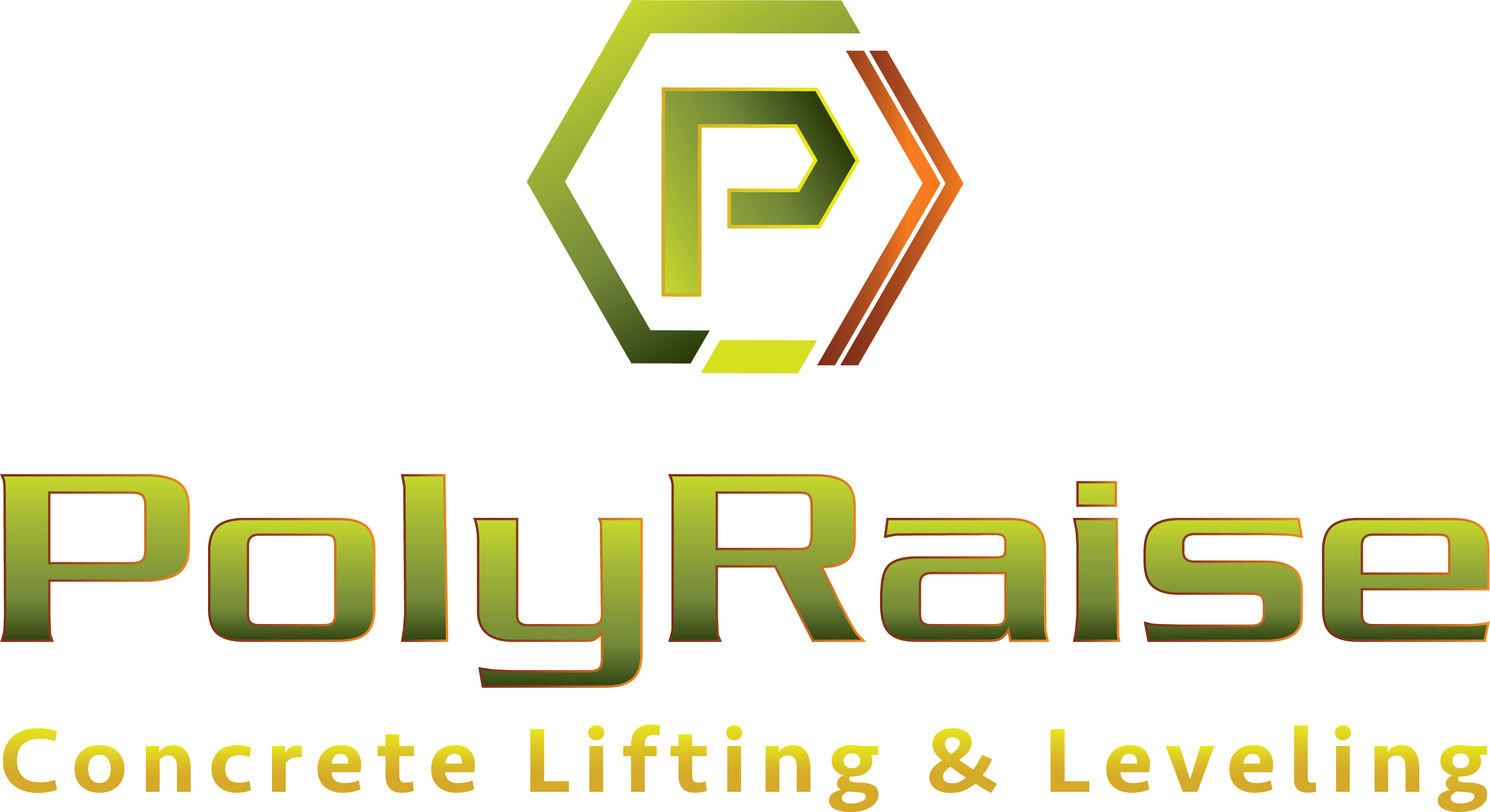Poly Lifting vs. Mud Jacking
Polyurethane concrete lifting equipment is costly, and polyurethane foam for concrete leveling is 4 to 5 times more expensive than making mud for mud-jacking. So, why would polyurethane concrete raising be used instead of traditional mudjacking?
To answer this question, four other major questions need to be asked and answered.
1. Why would anyone spend 2 to 3 times the amount of money to have their concrete raised using polyurethane opposed to traditional mud-jacking?

It pays to use the more expensive polyurethane method when raising slabs that are poured over very unstable or unsuitable fill. Polyurethane weighs around 2-3 pounds per cubic foot compared to 100-110 pounds per cubic foot of traditional mud, making polyurethane material much less likely to overburden unstable soil. In an article written by G. L. Bowen PE. LLC, Helical Piers & Polyurethane Foaming in the April addition of Helical Pier World, Mr. Bowen discussed the advantages of using closed cell polyurethane foam to fill voids and support floors over peat moss soils in Alaska. In situations like this, light weight polyurethane has a tremendous advantage over much heavier mud-jacking materials.
2. Is polyurethane strong enough to raise and support concrete slabs?
Traditional mud-jacking does have an advantage over polyurethane when it comes to compressive strengths. A contractor can make the compressive strength of mud-jacking material be whatever is desired by adding cement or combining cement with lime or sand achieving compressive strengths of 2,400 PSI. The big disadvantage is the inconsistency of the mixture.
Polyurethane’s compressive strength is consistently around 80 to 100 PSI for and average 2lb foam. It is preferable to pump a higher compressive strength material than the existing sub-base.
3. Does the finished job look better than traditional mud-jacking?
A feature of polyurethane that will make the end results more attractive, especially to the residential market, is a smaller injection hole. Polyurethane utilizes a hole that is only 5/8” or smaller, compared to mud-jacking holes that run between 1” and 2”. (So compare a tennis ball to a dime or #2 pencil)

4. Who wants their concrete raised using polyurethane foam?
US Departments of Transportation seem to be preferring the use of polyurethane concrete lifting for lifting, leveling, void filling, and under sealing streets, highways, and making repairs on sagging bridge approaches or departures along with removing dips in highways. The main reason being the light weight characteristic of the material which will not overburden the soil.


Our experience tells us that conventional mud-jacking will be around for a long time. The average consumer will always look for the most inexpensive way to fix settled concrete. However, polyurethane concrete lifting has found a home and will be the solution to raising slabs when a light weight material is needed.
WHAT IS MUDJACKING?
Mudjacking uses a mixture of sand and water infused with a small amount of Portland cement, which helps the material solidify. The sand and water mixture is pumped through 1-5/8″ holes in the concrete using hydraulic pressure to lift the settled concrete. This mixture is considered a structural fill and is very heavy, weighing an average of 100-110 lbs. per cubic foot of material.
BENEFITS OF POLYURETHANE CONCRETE RAISING VS. MUDJACKING
 Polyurethane concrete raising consists of an environmentally safe liquid polymer foam that is injected through small (5/8″) dime-size holes in the concrete and into the loose, unstable soils below. Through a chemical reaction, the high density foam expands to stabilize the loose soils and lift the settled concrete. After approximately 15 minutes, the polyurethane material is fully cured and ready to return to service. The polyurethane only weighs about 2 pounds per cubic foot of material. Polyurethane foam is an inert, non-toxic, environmentally safe material. It is impervious to moisture or decay, ensuring that over time, it will not only be environmentally friendly, but your concrete repair will last a lifetime.
Polyurethane concrete raising consists of an environmentally safe liquid polymer foam that is injected through small (5/8″) dime-size holes in the concrete and into the loose, unstable soils below. Through a chemical reaction, the high density foam expands to stabilize the loose soils and lift the settled concrete. After approximately 15 minutes, the polyurethane material is fully cured and ready to return to service. The polyurethane only weighs about 2 pounds per cubic foot of material. Polyurethane foam is an inert, non-toxic, environmentally safe material. It is impervious to moisture or decay, ensuring that over time, it will not only be environmentally friendly, but your concrete repair will last a lifetime.
PolyRaise’s polyurethane method utilizes the much smaller, 5/8″ hole. Following the repair those holes are filled with a cementious grout to match the surrounding concrete. Our polyurethane concrete lifting method was developed and is used as an alternative to concrete mudjacking.

